by Blanca Valencia - @blancsvalencia
.png.transform/rendition-xs/image_image%20(1).png)
Not only is it healthy, but also delicious: Spain can proudly boast a wide variety rooted in quality and tradition, giving rise to essential dishes in its culinary repertoire

by Blanca Valencia - @blancsvalencia
In Spain, we say “con tomate mil manjares” or “with tomato, a thousand delicacies.” Tomatoes are essential in dishes like gazpacho, salmorejo and Catalonia’s pa amb tomàquet. They form the base of our sofrito and salmorreta, the latter, an Alicantine sauce enriched with ñora pepper, and the start of rice dishes like arroz a banda. Tomatoes also shine in bonito con tomate (white tuna with tomato), Mallorcan tumbet (a traditional dish made primarily with summer vegetables), and coca de trempó, as well as in lesser-known regional gems like pipirrana (a chopped salad) and vegetable preparations such as alboronía (a dish made from vegetables and seasoned with pimentón from Andalusia) and Catalan samfaina (a savory vegetable medley originally from Catalonia).
At the greengrocery, the local vegetable shop, varieties come by the dozen: some for frying, others for rubbing on bread, each with its purpose. But perhaps most telling of our love for the fruit, is our devotion to the simplest preparation of all: tomate aliñado, a single ripe specimen served raw, dressed minimally with an Arbequina extra virgin olive oil and salt.
Spain’s modern tomato is elegant and aspirational, part of our culinary DNA - treasured, not tossed aside. Spanish fashion house Loewe even has a handbag that pays homage to its shape.
The colors of tomato range from cold blue to fiery red passing through warm yellow with shapes that run the gamut from the spherical cherry to the voluptuous corazón de buey. Its flavor strikes a balance between acid and sweet with its glutamic acid providing umami. It has notes of tomatera or tomato vine, herbs and fruits echoing melodies found in our extra virgin olive oils.
Tomato pairs well with famous Spanish products like Jamón Ibérico, anchovies from Santoña, Manchego cheese PDO, Jerez vinegar, sea salt and wines like Godello and Albariño.
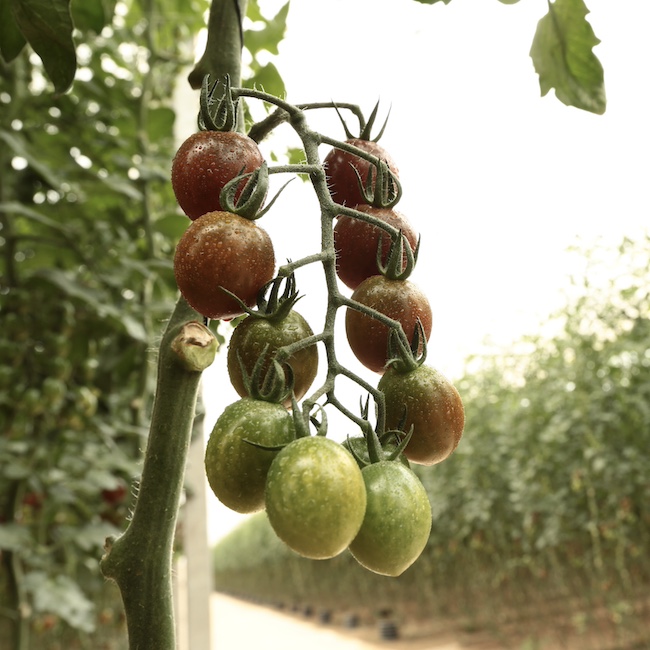
Tomato in Numbers
When it comes to tomatoes, Spain is both passionate and prolific: the country is the largest consumer, producer, and exporter of fresh tomatoes in the European Union. Per capita consumption stands at 11.22 kg, and tomatoes account for 23.4% of all vegetables placing it at the top followed by lettuce and spinach. Despite the rise of supermarkets, traditional grocery stores and open-air markets remain popular, representing up to 30% of all fresh produce sales.
Tomatoes are cultivated throughout the country, though the most significant production for fresh tomatoes comes from Andalusia, Murcia, Valencia, and Catalonia. The Canary Islands and Extremadura lead in tomatoes grown for industrial processing like our beloved tomate frito (fried tomato) a sauce that lives in literally every home’s pantry.
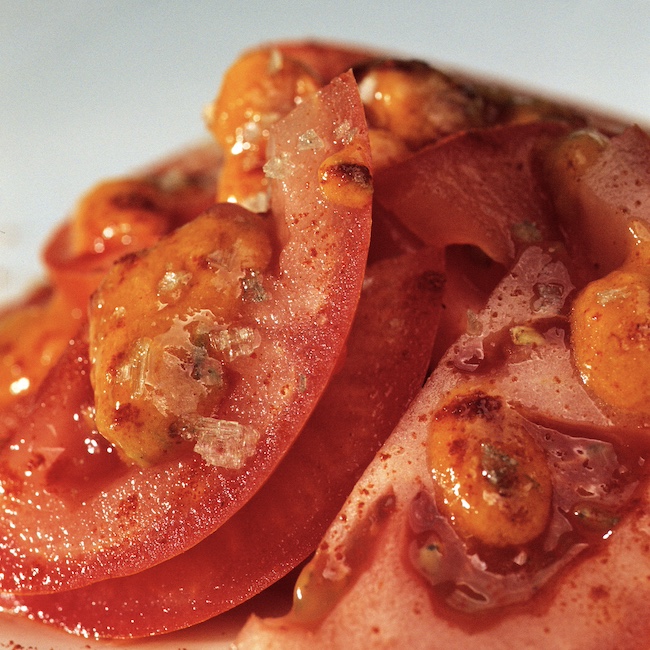
A Brief History
The first references to tomatoes in Spain come from friars and monks who documented their encounters with new foods during early explorations of the New World. In 1571, Franciscan friar Alonso de Molina included tomatl it in his Nahuatl–Spanish Dictionary as a fruit used to add a sour flavor to stews and sauces.
Bernardino de Sahagún, often considered the world’s first anthropologist, in his The General History of the Things of New Spain (1545-1590) includes early descriptions of tomatoes and its uses by the Aztecs. By 1592, Gregorio de los Ríos, a gardener in the Palace of Aranjuez grew sixteen varieties of tomatoes and noted that people were already making sauces with them.
When it comes to celebrations, our obsession with the tomato plays out in two strikingly different ways: the Tomatina in Buñol, Valencia, a frenzied tomato fight where 123 kg. of low quality tomatoes are thrown around by revelers and the fairs that gather Spain’s nerdiest heirloom tomato connoisseurs: Feria del Tomate Cántabro or Feria Ibérica del Tomate de Piñel de Abajo.
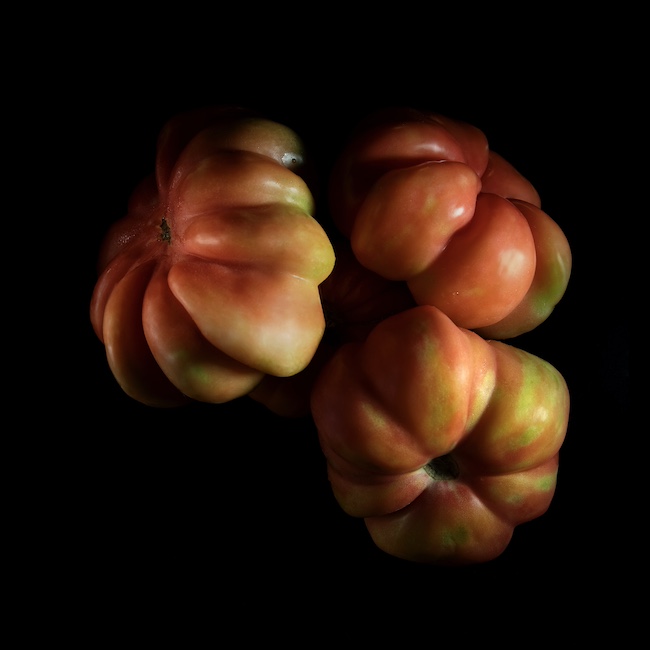
Significant Tomato Varieties
Tomatoes can be classified as commercial and traditional or heirloom and their shape: cherry, oblong, ribbed and round. Commercial tomatoes have longer or multiple growing seasons and are cross-breeds of varieties that can travel well with good flavour profiles and resistance to pests; some can be brands. EU legislation does not allow genetically modified tomatoes. Heirlooms, the belles of the ball, are open-pollinated cultivars.
According to Guy Ferrier, the man behind Simientes Infinitas association that has dedicated its life to preserving more than 1,500 varieties of tomatoes, the yield of an heirloom variety is about 4 kg as opposed to 18 kg on a commercial variety and their skins tend to be much thinner.
The Slow Food Ark, a catalogue of endangered foods, lists thirteen Spanish tomatoes that include Albesa, Ramallet and Santiago Black Tomato.
Here is a list of the most popular tomatoes in Spain and their uses.
Commercial Tomatoes
Cherry, cocktail, pear and vine are present like in other parts of the world. What differentiates Spanish tomatoes is the development of cross-breeds in the ribbed, black and pink tomatoes.
Black tomatoes: Kumato, a variety developed in the 1970s in Almería. With a sweet, acidic flavor and firm texture, its dark green to reddish-brown thick skin makes it ideal for eating raw in salads. Can be eaten cold. Bárbaro, a black tomato commercialized by Casi Cooperative similar to Kumato.
Cañada Níjar (PGI), Spanish Protected Geographical Indication for tomatoes with four types: oblong, round, cherry and asurcado or ribbed. Tomatoes grow in sub-desert or semi-desert lands which are dry and arid using sand mulching, a technique which helps retain moisture, regulate temperature and allow cultivation in saline soils. The PGI was in operation until 2010 and is now in process of reviewing its production processes for a relaunch.
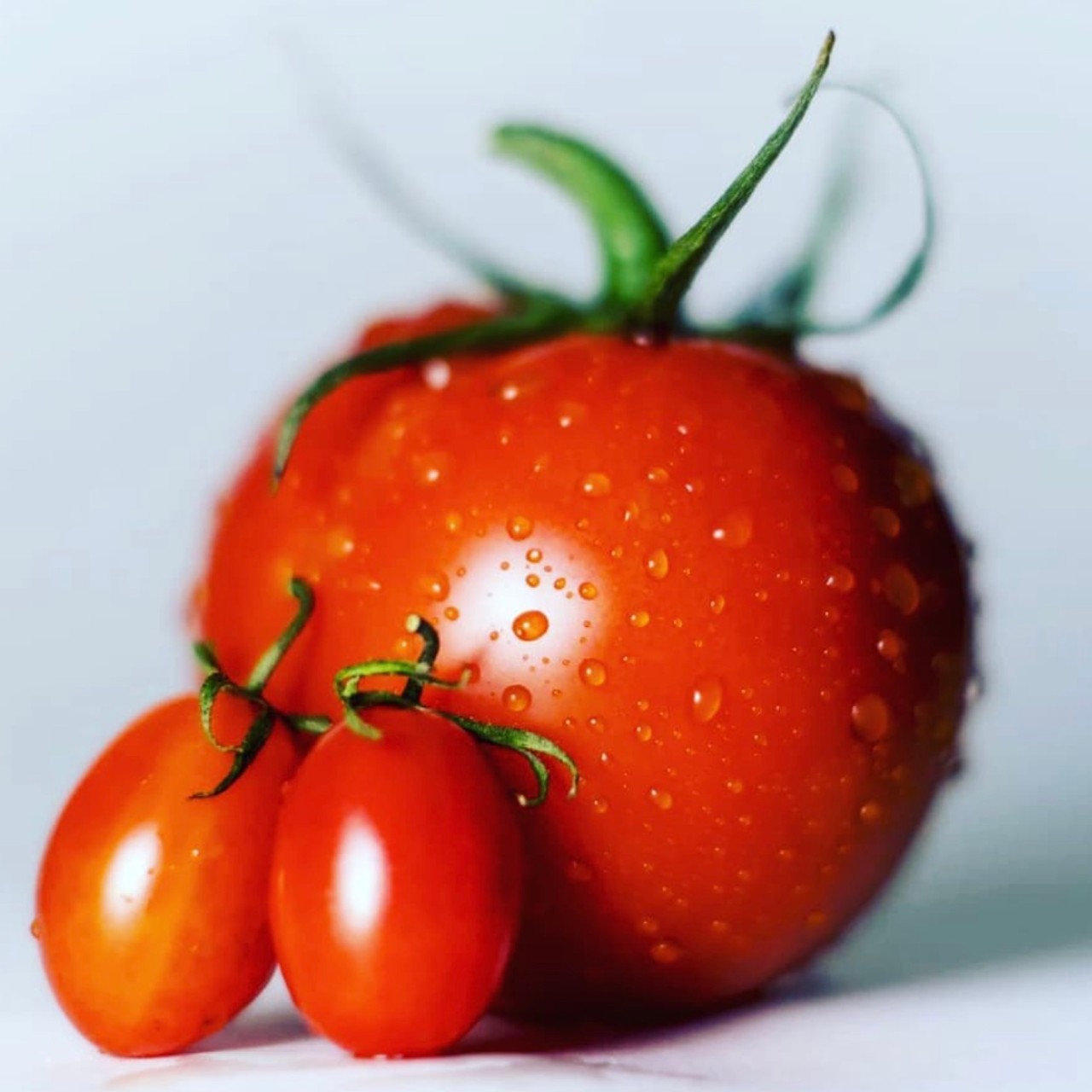
Corazón de Buey, “Oxheart” variety; large, ribbed. Mildly sweet and meaty with a lot of juice and very low acidity and mild umami. Matures from the inside out and has few seeds. Excellent for slicing and salads. Casi Cooperative has an inverted version.
Liso, smooth one of the most popular cultivars with high yields. Round and mild with a good balance between sweetness and acidity. Used in gazpacho and salmorejo or salads.
Mar Azul or Blue sea, blue purplish tomato, crunchy with mild acidity.
Monterosa and Monterosa mini, commercial brands developed in 2012 and developed from a pear tomato mother and a Genovese Costoluto grandfather in Catalonia. Yellow ones are balanced between sweetness and acidity with a herbal aftertaste. The chocolate version also has toasted aftertaste.
Pera, used for gazpacho, preserves and tomato sauces. Pear-shaped, meaty and low in seeds. Light and bright sweetness with low acidity and fine skin. Umami intensifies through cooking.
Tomates Rosas or Pink Tomatoes, generally tend to be sweeter than red tomatoes, with a balanced and milder flavor. They are known for their sweetness, low acidity and earthy umami. A juicy pink tomato with thin skin and firm flesh. Cándido, a sturdier variety developed out of Rosa de Barbastro.
Raf, also called pata negra or black-hoof as reference to jamón ibérico. A high-end intensely sweet green tomato with a light acidity, juicy with abundant pulp. Its bright and tangy acidity and crunchiness evolves as it matures from green to red.
Thick and green skinned and ribbed with a smooth pulp it matures from the inside out. A cross between Marmande and other American varieties developed in Almería, which features prominently in high-end restaurants.
Some cooks opt to serve them peeled. Some commercial cross-breeds developed from Raf but that travel well are Adora, Rebelion and Anhel.
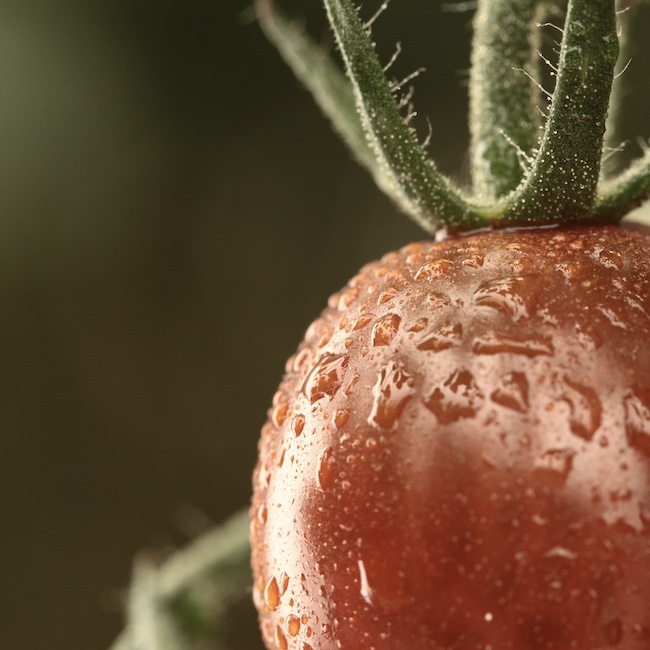
Traditional or Heirloom Tomatoes
Aretxabaleta, traditional tomato from the Basque Country, purple with pink tones. Low water content enhances the flesh’s medium sweet flavour with low to moderate acidity. Classic tomato garden smell with strong earthy umami and low bitterness. Eaten raw on its own.
Muchamiel, flattened beefsteak developed in Alicante and Valencia. Green with stripes, turns red as it ripens and is known for its long shelf life and strong flavor. Medium sweetness with a lively tang, strong umami and herbal tomato aroma and traditional tomato flavor.
Montserrat, preserved by Catalan farmers, is ribbed, hollow, and intensely pink with a fruity, balanced flavor with low acidity and umami. Its firm but hollow texture and refreshing taste makes it ideal for stuffing or serving raw in salads.
Ramallet or Penjar, a group of many varieties, small and dense. Red tomatoes with thick skins and mild earthy aroma with a medium sweet, medium acidity and spicy umami. Used for spreading on bread and for slow-roasting also can be called tomate de untar and traditionally used for winter storage (tomàquet de penjoll or hanging tomato). Traditional in Catalonia, the Balearic islands and Valencian Community.
Rosa de Barbastro, a very large, pinkish, and juicy tomato, has a very high sweetness with very low acidity, moderate umami and no bitterness with fruity aromatic notes. Originally from Aragón, eaten raw in salads.
Feo de Tudela, traditional tomato from Navarra which literally means ugly. Thin-skinned tomatoes lumpy, ribbed, red-pink. Very aromatic with fruity and floral notes with a perfect balance between the medium to high sweetness and low acidity and medium smooth umami.
Moya comes in different colors that range from green to black with a balanced flavor. Thick, meaty flesh with minimal seeds. Remarkably sweet with low acidity fruity aroma. Perfect in tomato tartar.
Negro de Santiago, medium size dark red to purplish brown with an earthy aroma, very high sweetness with a low acidity, and very high savory umami from Galicia. Dark red and green to be eaten raw.
There is a tomato variety and preparation for everyone! Some of these classic Spanish dishes where tomato is king can be found in the restaurants certified with the Restaurants from Spain seal. Try gazpacho at Gazpacho (of course!) Salad bar in Hà Nội, Vietnam, or Restaurant Les Pyrénées (Montreal, Canada). Enjoy pa amb tomàquet at Bar Berta (Rotterdam, Netherlands) or El Sur (Dubai, United Arab Emirates). And don’t miss the Kumato tomato featured in the tapas of Delicatessen (Fredrikstad, Norway).